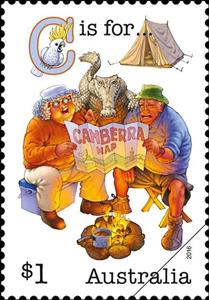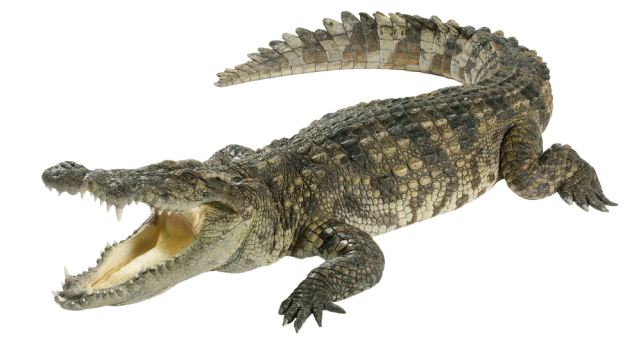Stamp: C is for Camping, Camberra map, crocodile and cockatoo (Australia 2016)
C is for Camping, Camberra map, crocodile and cockatoo (Australia 2016)
16 August (Australia ) within release Fair Dinkum Aussie Alphabet Part 2 goes into circulation Stamp C is for Camping, Camberra map, crocodile and cockatoo face value 1 Australian dollar
| Stamp C is for Camping, Camberra map, crocodile and cockatoo in catalogues | |
|---|---|
| Michel: | Mi: AU 4542II |
Stamp is vertical format.
Fine backgroundAlso in the issue Fair Dinkum Aussie Alphabet Part 2:
- Stamp - A is for Aussie Rules face value 1;
- Stamp - C is for Camping face value 1;
- Stamp - L is for Lyrebird face value 1;
- Stamp - R is for Refrigerator face value 1;
- Stamp - T is for Tasmania face value 1;
- Stamp - A is for Aussie Rules face value 1;
- Stamp - C is for Camping face value 1;
- Stamp - L is for Lyrebird face value 1;
- Stamp - R is for Refrigerator face value 1;
- Stamp - T is for Tasmania face value 1;
- Booklet Pane - A is for Aussie Rules, Ant, and ANZAC memorial face value 10*1;
- Booklet Pane - T is for Tasmania map, Tasmanian devil, tradesman in tinnie face value 10*1;
- Booklet Pane - C is for Camping, Canberra map, crocodile and cockatoo face value 10*1;
- Booklet Pane - L is for Lyrebird on lounge, Lace monitor, Lamingtons on log face value 10*1;
- Booklet Pane - R is for Refrigerator, Rugby ball, rocket, reel, ruler, rope face value 10*1;
- Se-tenant - Fair Dinkum Aussie Alphabet (Letters A, C, L, R, T) face value 5*1;
- Stamp - L is for Lyrebird on lounge, Lace monitor, Lamingtons on log face value 1;
- Stamp - A is for Aussie Rules, Ant and ANZAC Memorial face value 1;
- Stamp - T is for Tasmania map, Tasmanian devil, tradesman in tinnie face value 1;
- Stamp - C is for Camping, Camberra map, crocodile and cockatoo face value 1;
- Stamp - R is for Refrigerator, Rygby ball, rocket, reel, ruler, rope face value 1;
Stamp C is for Camping, Camberra map, crocodile and cockatoo it reflects the thematic directions:
Animals are multicellular, eukaryotic organisms of the kingdom Animalia (also called Metazoa). All animals are motile, meaning they can move spontaneously and independently, at some point in their lives. Their body plan eventually becomes fixed as they develop, although some undergo a process of metamorphosis later on in their lives. All animals are heterotrophs: they must ingest other organisms or their products for sustenance.
Crocodiles (family Crocodylidae) or true crocodiles are large semiaquatic reptiles that live throughout the tropics in Africa, Asia, the Americas and Australia. The term crocodile is sometimes used even more loosely to include all extant members of the order Crocodilia, which includes the alligators and caimans (family Alligatoridae), the gharial and false gharial (family Gavialidae) among other extinct taxa.
A flame (from Latin flamma) is the visible, gaseous part of a fire. It is caused by a highly exothermic chemical reaction made in a thin zone. When flames are hot enough to have ionized gaseous components of sufficient density, they are then considered plasma.
Reptiles are tetrapod (four-limbed vertebrate) animals in the class Reptilia, comprising today's turtles, crocodilians, snakes, amphisbaenians, lizards, tuatara, and their extinct relatives. The study of these traditional reptile orders, historically combined with that of modern amphibians, is called herpetology. Because some reptiles are more closely related to birds than they are to other reptiles (e.g., crocodiles are more closely related to birds than they are to lizards), the traditional groups of "reptiles" listed above do not together constitute a monophyletic grouping (or clade). For this reason, many modern scientists prefer to consider the birds part of Reptilia as well, thereby making Reptilia a monophyletic class.



